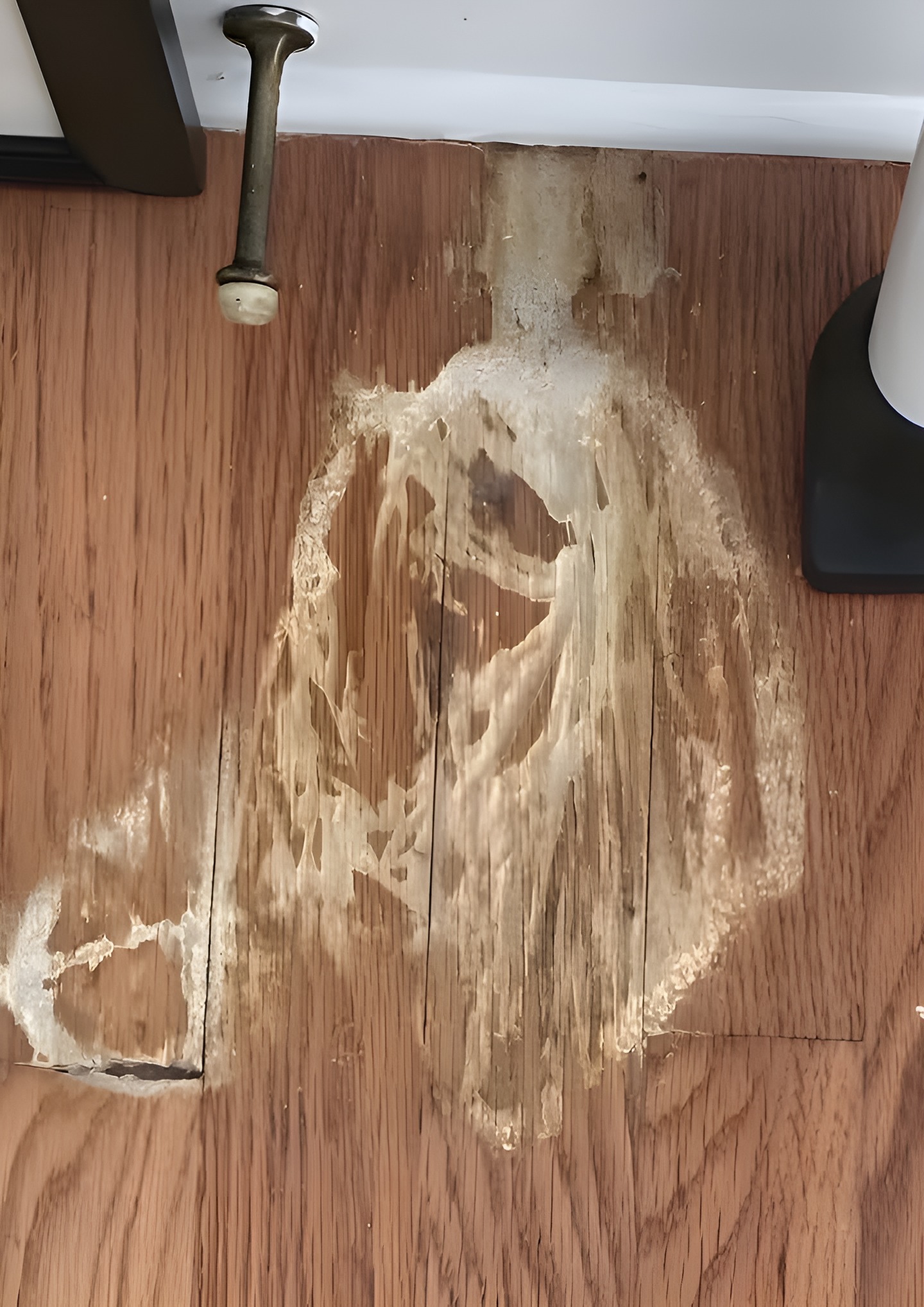Fix a Bleach Damage on a Wooden Floor on a Budget
The image shows a wooden floor with a noticeable bleach stain, characterized by discoloration and damage to the wood's finish. The user's description states: "Accidentally had bleach pour on wooden floor, I live in a rental. Please help!". The likely cause of the damage is the accidental spill of bleach, a common household cleaning agent that can discolor and damage wood surfaces. Assuming the damage is surface-level based on the image, addressing this issue is crucial to prevent further damage and maintain the floor's value. This DIY approach reassures users that the repair is affordable and achievable with minimal expertise.
Overview:
This repair guide provides a budget-friendly solution to fix a bleach-damaged wooden floor, focusing on simple, low-cost methods using household items. The process should take 15–30 minutes to complete, requires a beginner skill level, and involves basic household items. Prerequisites include a clean workspace and a well-lit area. The expected outcome is a restored wooden floor with minimal visible damage. General safety precautions include wearing gloves when handling abrasive materials and working in a well-ventilated area. This repair method saves money by using items you likely already own, avoiding expensive professional services. For severe or extensive damage, professional help might be more cost-effective long-term.
Tools and Materials Required:
- Dry cloth: $0 (reuse an old cloth)
- White vinegar: $1–$2 (at most grocery stores)
- Baking soda: $1–$2 (at most grocery stores)
- Wood furniture crayon or wax: $5–$10 (optional, for color matching)
- Polyurethane (clear coat): $5–$10 (optional, for protection)
Step-by-Step Repair Guide:
- Clean the Area: Use a dry cloth to remove any debris or remaining bleach residue from the damaged area.
- Neutralize the Bleach: Mix 1 tablespoon of white vinegar with 1 tablespoon of baking soda to form a paste. Apply the paste to the damaged area and let it sit for 5–10 minutes.
- Wipe and Rinse: Use a clean, damp cloth to wipe away the paste and check if the stain has lightened. Repeat if necessary.
- Color Match (Optional): If the area remains discolored, use a wood furniture crayon or wax to color match the surrounding floor.
- Apply Clear Coat (Optional): For added protection, apply a clear polyurethane coat once the area is dry.
Estimated Cost:
- Materials:
- White vinegar: $1–$2
- Baking soda: $1–$2
- Wood furniture crayon or wax: $5–$10 (if needed)
- Polyurethane: $5–$10 (if needed)
- Total Estimated Cost: $7–$24
- Costs vary by region and supplier; check dollar stores, thrift shops, or online marketplaces for deals.
Tips and Warnings:
- Test First: Always test household items on a hidden area to avoid discoloration.
- Prevent Future Damage: Place felt pads under furniture and avoid using harsh chemicals on wood floors.
- Common Mistakes to Avoid: Don’t use a wet cloth on wood, as it may swell or further damage the surface.
- Safety Precaution: Wear gloves and work in a well-ventilated area when using chemicals.
Additional Engagement Elements:
FAQs:
Q: Can I use this method on laminate flooring?
A: This guide is tailored for wooden floors; laminate repairs may require different methods.
Q: What if I don’t have a wood crayon?
A: Use a marker or nail polish to temporarily color match until you can get a crayon.
Q: How can I prevent future stains?
A: Place mats under furniture and clean spills immediately to prevent damage.
This guide provides a practical, budget-friendly solution to fix a bleach-damaged wooden floor, ensuring a professional-quality result with minimal investment.





